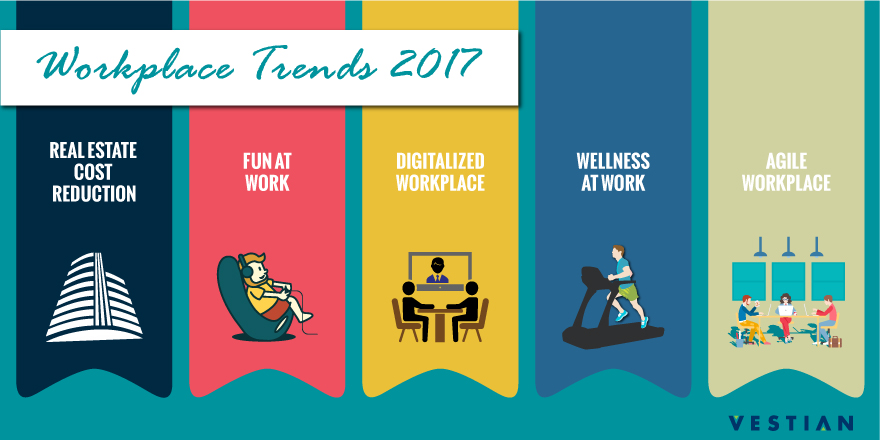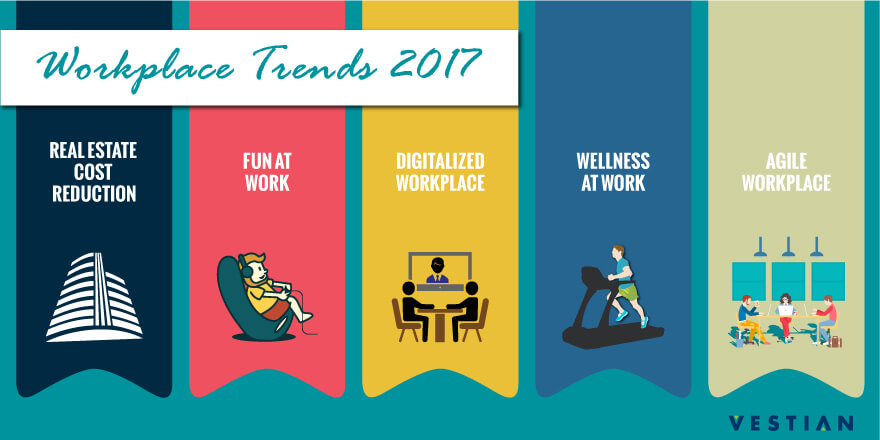
Millennials are the largest workforce in the world today. Combined with generation Z (those born between mid nineties and early 2000s), who are set to join the workforce, this tech savvy generation is redefining/ changing how corporations visualise their workplace. This in turn has led to a corporate culture that is focused on capturing the imagination of the employee and enhancing their engagement experience.
The trend of aesthetically designed offices is now not only limited to creative agencies but is being adapted across corporates, as they invest in developing an office that encourages greater communication and collaboration. Workplace design and build companies are at their innovative best as they create an environment that facilitates the employees to work when and where it suits them, which was earlier not deemed fit for office spaces.
Corporates are overhauling their HR strategies to attract and retain the blended workforce - be it a change in recruitment style, introduction of flexible work timings, option to work from home or operate out of a virtual office to name a few. Even in functional workplaces, huddle spaces are being allocated to teams and employees thereby encouraging them to personalize and make the workplace “their own”.
Some of the trends that have emerged as a result of the changing workplace requirement are :
AGILE WORKPLACE TRENDS:
Office space designs today focus on creating an agile and activity based workplace that seamlessly blends with changing work requirements of an informal workplace. The design trends capture varied themes with vibrant colours, interesting design elements which add to the casual work environment like living room ambiance, ergonomically designed work furniture, break away from the mundane meeting room experience – with hammocks and automobile concept meeting areas and break-out spaces, to name a few.
Usage of green walls and water bodies inside the workplace lends an air of freshness and is believed to bring in a fresh and positive vibe in the work environment.
FUN AT WORK:
Realising the importance of stress free work environment that allows employees to de-stress and have fun at work, is reflected in the design trends, with higher emphasis laid on employee recreational requirements . This may include indoor game courts with foosball tables, virtual golf, pool tables and slides and swings on the floor, cycle inside work area, climbing nets, to name a few. In addition, built-to-suit campus and multi-tenanted Tech Parks attract clients by providing outdoor recreational courts, swimming pools and café facilities as part of the amenities.
WELLNESS AT WORKPLACE:
In order to attract and retain talent, more and more companies are promoting wellness at work. This could be in the form of Crèches, day care facilities, well equipped gyms and on-site, functional cafeterias, rec rooms, meditation room , sports clubs, teams etc.
Providing day care facilities and creches on premises has had tremendous response from parents who wish to give their children a safe environment without compromising on their career demands.
Similarly, with increased health awareness amongst the current generation, fully equipped health club with steam and sauna facilities combined with wellness cafeteria is much appreciated.
DIGITALIZED WORKPLACE:
A digitalized workplace takes a high priority when designing/redesigning a workplace. Office spaces now use state of the art and intelligent AV technologies to seamlessly connect and collaborate with colleagues and clients worldwide.
REAL ESTATE COST REDUCTION:
The increasing trend of moving towards agile and activity based workplace has resulted in lesser real estate take up. In addition, another emerging trend calls for an improved seat count vs. real estate take up. Essentially, companies are taking up space equivalent to 70-80% of their employee strength instead of the earlier 100%. There are no fixed, allocated spaces and employees, teams occupy seats on a first come basis and the nature of the task/ assignment. This trend provides per seat allocation of 65-70 sq ft per person including work cafes, huddle spaces and other amenities which attribute to a significant boost in employee engagement and performance.
